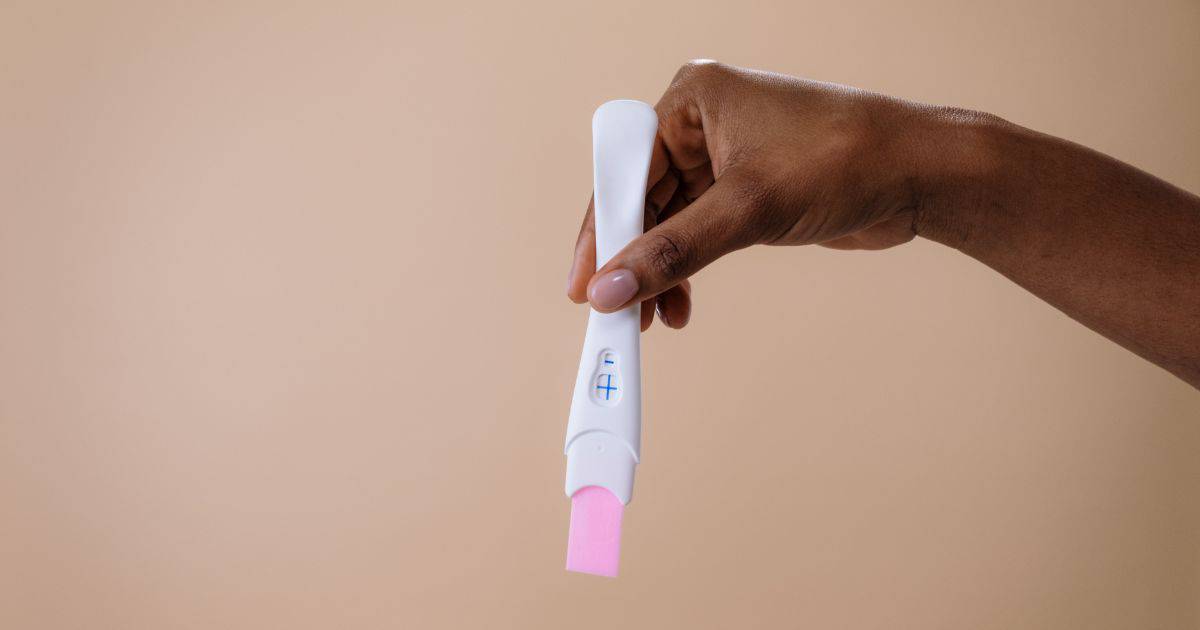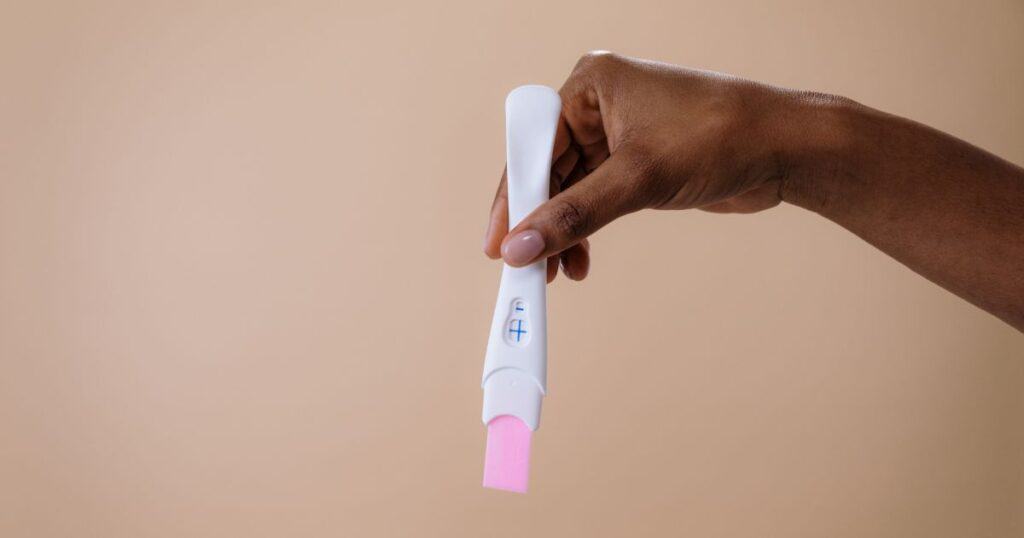What Not to Do Before Taking a Pregnancy Test: Do’s & Dont’s
This post may contain affiliate links that I may receive a commission from if you click & buy. In addition, the information on this site is NOT intended to be medical advice. See my full policy for more information.
Having a baby is a life-altering experience. Whether you’re eagerly hoping for a positive pregnancy test or anxious about the possibility, taking an at-home pregnancy test can be a pivotal moment for anyone. I remember all too well the feeling of waiting for that mysterious line to appear possibly. And, to ensure you get the most accurate results, it’s important to understand what not to do before taking a pregnancy test.
Here, we’ll delve into the dos and don’ts of pregnancy testing, helping you navigate this crucial step with confidence and accuracy.
What NOT To Do Before Taking a Pregnancy Test
Don’t Take an Expired Pregnancy Test
Using an expired at-home pregnancy test can have significant implications for accuracy and reliability — thus leading to inaccurate results. At-home pregnancy tests contain chemical reagents that are designed to detect the presence of the pregnancy hormone hCG in the urine.
Over time, these reagents may deteriorate or become less effective, reducing the test’s sensitivity and specificity. An expired test may produce false-negative or false-positive results, which can be emotionally distressing for moms anxiously waiting for a result that could change the rest of their lives. This is why it is oh-so crucial to adhere to the manufacturer’s recommended expiration date and avoid using tests that have passed this date.
Have a tingling instinct you may be pregnant? Try my favorite & reliable Labcorp OnDemand Pregnancy Test (because it’s the only direct to consumer — aka to YOU — test that provides a quantitative hCG level! All you do is purchase your test, go to one of 2,000 Labcorp locations to submit your sample, and get results online that you can share with your healthcare provider.
Don’t Drink a Ton of Water Before Taking a Pregnancy Test
Drinking an excessive amount of water before taking a pregnancy test can significantly compromise the accuracy of the results. Pregnancy works by detecting the presence of the hormone hCG in the urine (as mentioned above), and diluting the urine with excessive water can lead to hCG levels that are too low for detection.
Sometimes, this could result in a false-negative result, causing unnecessary confusion and anxiety for women who are actually pregnant. For the best and most reliable results, it’s recommended to take a pregnancy test using a concentrated, first-morning urine sample when hCG levels are typically at their highest.
Don’t Believe All At-Home Pregnancy Tests
At-home pregnancy tests are created differently due to variations in their design, technology, and sensitivity levels. Noting these differences can affect the accuracy and reliability of the test results.
For instance, various manufacturers employ different methods for detecting the pregnancy hormone hCG, leading to variations in how early in pregnancy a test can detect pregnancy, as well as the likelihood of false negatives or positives.
Before using a pregnancy test, be sure to read its specifications such as how early it can detect pregnancy and whether it’s a test strip, digital pregnancy test, or non-digital pregnancy test. In some instances, some moms have expressed difficulty reading results on test strips like this one, leading them to end up purchasing a digital pregnancy test. In other instances, some moms have noted a malfunction in their readings — leading them to opt for a different type of pregnancy test.
Knowing these small details to consider when choosing a pregnancy test can help you select a test that aligns with your specific needs, whether it’s the early detection of pregnancy, affordability, or ease of use.
Don’t Test Too Soon (Even Early Pregnancy Tests Have Limits)
I know the excitement and anticipation that come with wanting to take a pregnancy test early on, but it’s so important not to rush it. Trust me, the minute I even suspected I could be pregnant made me want to run to the store and take a test right away, but there’s a small drawback.
Taking a test too soon, before your body has had a chance to produce enough hCG can lead to a negative result. It can be incredibly disappointing and disheartening when you’re actually pregnant, but the test doesn’t pick it up.
So, a little friendly advice from one mom to another: be patient, wait until you’ve missed your period, or ideally, until at least the day of your expected period.
Waiting until your body has accumulated enough of the pregnancy hormone can help you get a more accurate result while saving you the heartache of seeing a negative result pop up.
Don’t Ignore the Time Limit of The Test
At-home pregnancy tests are designed to give accurate results within a specific window of time. Reading them afterward can lead to what’s known as an “evaporation line” or a “false positive.”
These evaporation lines can appear when the urine evaporates and leaves a mark, which might look like a positive result, but it’s not. I’ve been there, and I know the suspense can be hard, but trust me, for the most reliable outcome, stick to the instructions and don’t peek outside that waiting period due to those frustrating possible reasons.
Taking a Pregnancy Test: Important Things to Know
It’s essential for women and pregnant people to be well-informed about the ins and outs of taking a pregnancy test to ensure accurate results and minimize any unnecessary stress. From the timing of the test to the importance of following the manufacturer’s instructions, there are important factors to consider as discussed in this article. Now, we’ll delve into a few more key things to know about taking a pregnancy test for best results.
Understanding HCG Levels: the Pregnancy Hormone
Before we dive into the details, let’s talk about the key player in pregnancy tests: HCG, or human chorionic gonadotropin. This hormone is produced by the developing placenta shortly after a fertilized egg attaches to the uterine wall. hCG levels rise rapidly in the first weeks of pregnancy, making it a reliable indicator of pregnancy in tests. That’s also why it’s commonly referred to as the pregnancy hormone.
In addition, HCG helps support the corpus luteum, a structure in the ovary that produces progesterone during the early stages of pregnancy. Meanwhile, progesterone is essential for maintaining the uterine lining and the prevention of menstruation, all things important for a successful pregnancy. Moreover, hCG also aids in the development of the placenta, ensuring proper nutrient exchange and oxygen supply between the mother and the developing fetus.
All this to say, the hCG hormone is incredibly important and is much needed to detect pregnancy no matter what type of test you take.
When is the Best Time to Take an At-Home Pregnancy Test
The best time to take an at-home pregnancy test is generally recommended to wait until the first day of a missed menstrual period to ensure the highest accuracy. Testing too early might yield inaccurate results, as your body may not have produced enough hCG to detect.
The same holds true for the time of day. As mentioned earlier, different times of the day will yield different levels of hCG in the urine. If you want the most accurate home pregnancy test results, try to take your test first thing in the morning while your urine is still heavily concentrated.
Which Pregnancy Test is Right For You?
There are two main types of pregnancy tests available:
- and pregnancy blood tests (usually administered by healthcare providers).
Both of these tests are designed to detect the presence of hCG, however, blood testing is generally more sensitive and can detect lower levels of HCG, offering accurate results earlier in pregnancy.
In addition, a blood test can also provide a quantitative hCG level! That means instead of detecting if hCG is present, it’ll give you an actual numerical value to tell you how much is present.
You can obtain quantitative hCG blood tests through your doctor’s office or you can purchase your test from home through Labcorp, go to one of 2,000 Labcorp locations to submit your sample, and get results sent directly to you online that you can then share with your healthcare provider (for the record, this is my favorite way to take a pregnancy test).
Next Steps After Taking a Pregnancy Test
If you receive a positive test result, congratulations mama, life is about to get a little more exciting! Your next step should be to make an appointment with your healthcare provider for timely prenatal care.
Once all checks out at your prenatal appointment, you’ll likely have a ton of pregnancy questions, but don’t worry, we’ve got you covered!
On the other hand, a negative test result doesn’t necessarily mean you’re not pregnant. Having an irregular cycle and other medical conditions can affect the accuracy of pregnancy tests. If in doubt, consult your healthcare provider for further guidance.
To wrap things up, taking an at-home pregnancy test can be a nerve-wracking experience, I know first hand. To ensure the most accurate and reliable results, remember to follow the do’s and don’t guidelines mentioned above in the article. Understanding the significance of HCG levels, adhering to the best testing practices, and considering the timing and type of test are all essential for a successful pregnancy test.
Whether you’re excitedly anticipating the positive test or hoping for a negative one — I hope you feel confident taking a pregnancy test and embarking on what could be one of the most momentous times of your life.
Read more pregnancy articles here:








